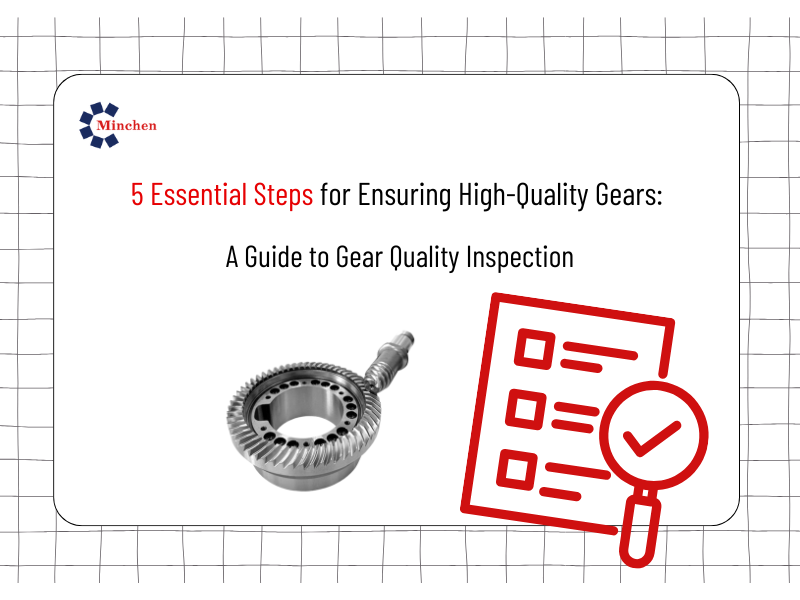5 Essential Steps for Ensuring High-Quality Gears: A Guide to Gear Quality Inspection

Introduction:
In gear manufacturing, quality inspection plays a crucial role in ensuring that each gear meets the high standards required for precision and durability. Poor-quality gears can lead to premature wear, noise, vibration, and, ultimately, machine failure. To avoid these costly issues, gear manufacturers employ a series of quality inspection steps. In this article, we'll explore the five essential steps to ensure high-quality gears through proper inspection processes.
Step 1: Visual Inspection
The first step in gear quality inspection is a thorough visual examination. This involves checking for surface defects such as cracks, pitting, or uneven surfaces that could affect the gear's performance. Visual inspection is typically performed with the naked eye or with the assistance of magnifying tools to identify defects early in the process.
- What to Check: Surface finish, cracks, and overall visual integrity.
- Tools: Magnifiers, visual comparison charts.
Step 2: Dimensional Inspection
Ensuring that the gear’s dimensions are accurate is critical for proper fitting and function. Dimensional inspection verifies that the gear conforms to the specified size, including parameters like pitch diameter, tooth height, and thickness. Any deviation from the design specifications could lead to poor performance or mechanical failure.
- What to Check: Gear diameter, tooth profile, thickness, and overall dimensions.
- Tools: Coordinate Measuring Machines (CMM), micrometers, calipers.
Step 3: Tooth Profile Inspection
The accuracy of the gear tooth profile is essential for smooth operation and minimizing noise and vibration. A gear’s tooth profile is inspected to ensure that it matches the design’s intended shape. This includes checking the involute curve, pitch deviation, and lead of the gear teeth.
- What to Check: Involute profile, pitch deviation, lead, and backlash.
- Tools: Gear measuring instruments, profile projectors, and involute measuring devices.
Step 4: Hardness Testing
Gears undergo heat treatment to improve their strength and wear resistance. Hardness testing ensures that the material's hardness meets the required specifications, which is crucial for the gear’s longevity and ability to withstand high loads. Common hardness testing methods include Rockwell and Vickers hardness tests.
- What to Check: Hardness level, consistency across gear teeth.
- Tools: Hardness testing machines (e.g., Rockwell hardness tester).
Step 5: Runout and Noise Testing Runout inspection determines whether the gear’s rotation is concentric with its axis. Excessive runout can cause vibration, noise, and premature wear. Additionally, noise testing is conducted to ensure that the gear operates quietly, which is particularly important in high-speed machinery. Testing the runout and noise ensures the smooth operation of the gear in practical applications.
- What to Check: Concentricity, runout tolerance, noise levels during operation.
- Tools: Dial indicators, runout testers, noise and vibration analyzers.
Conclusion:
By following these five essential steps, gear manufacturers can ensure that their products meet the high standards necessary for efficient and reliable performance. Gear quality inspection is not only a critical part of the manufacturing process but also a safeguard against costly operational failures. At Minchen Gear Co., Ltd., we implement rigorous quality inspection protocols to ensure that every gear we produce delivers optimal performance and durability.
Call to Action:
If you’re looking for high-quality, precision-engineered gears that meet the strictest quality standards, contact Minchen Gear Co., Ltd. today. We offer custom solutions and comprehensive quality inspections to ensure your gear needs are met with the highest level of excellence.

